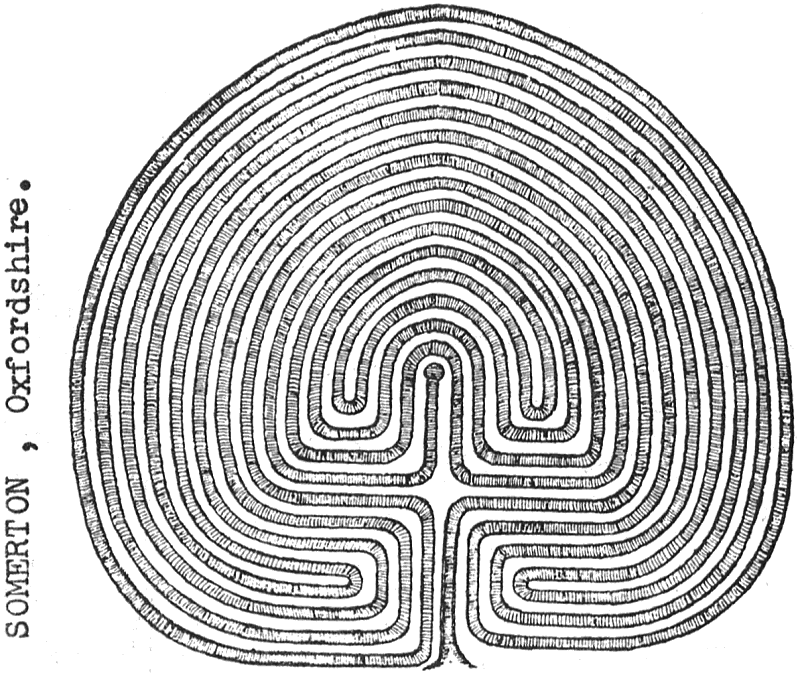
Ancient Mysteries no. 17, October 1980 (continuation of Journal of Geomancy)
{6}
An illustrated lecture was given at the 3rd Cambridge Geomancy Symposium dealing not only with extant mazes but also many lost sites. Starting with an introduction from his booklet Caer Sidi: the Turf Mazes of England, he then showed slides of the Tintagel labyrinth carvings dated to 1500 BC; these he postulated may mark the introduction of the maze concept to the British Isles, possibly arriving from Cretan travellers. The Cretan-style mazes (which possibly symbolizes the unconscious thought patterns of man) still to be found at the Troy Towns of Brandsby, Somerton, St Agnes (Scilly Isles) and the 3D labyrinth on Glastonbury Tor are a continuation of this introduction, but were later replaced by a medieval Christianized version, probably emanating from Chartres Cathedral, France, which was used as an allegory of the Christian’s continuous struggle against evil. This later design is still visible in the mazes at Alkborough, Breamore, Wing, Hilton and Saffron Walden.
Before going to the Winchester Miz-Maze and {7} some of the many lost maze sites, Jeff discussed the symmetry and geometry inherent in the turf maze designs which in his view form an important pert of the maze concept.
Jeff finished by showing slides of the small turf maze he recently cut in his garden and mentioned the work of the CAERDROIA PROJECT (which he co-ordinates). The project sets out to collate information on the many turf mazes past and present and hopes in the future to set about restoring some of the lost and overgrown mazes to their original designs.

Further details of the CAERDROIA PROJECT from 53 Thundersley Grove, Thundersley, BENFLEET, Essex, England.
The Caerdroia Project has since changed its name to Labyrinthos. The postal address remains the same. For more information, see the Labyrinthos website. – MB, February 2016